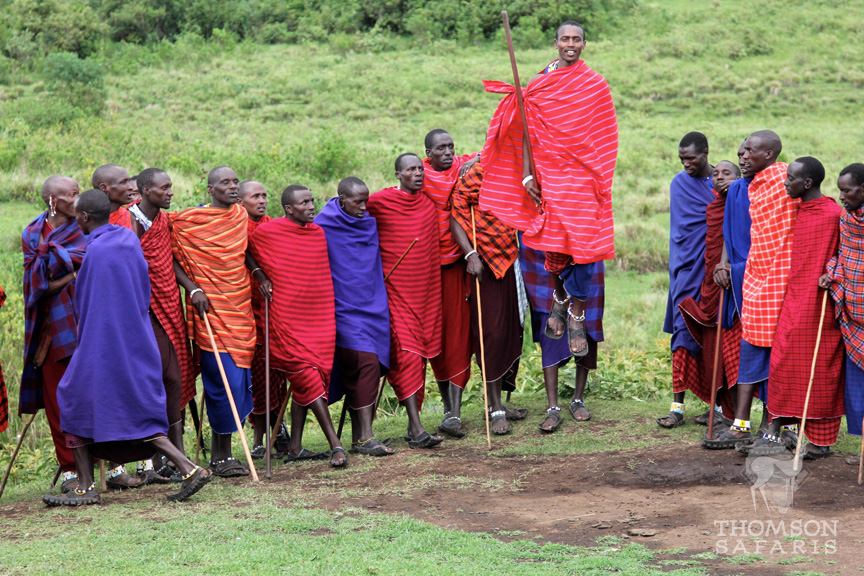Growing Up Up Up! The Maasai “Jumping Dance”
 Maasai jumping ceremony
Maasai jumping ceremony
Photo: Thomson Safaris guest, Kristen Boren
It’s a tourist favorite, and it’s been captured in endless pictures, videos, and documentaries; the adumu, often called the “jumping dance,” is a highly recognizable ritual of Maasai life. But many tourists may not know the true meaning of this dance in Maasai culture (tribesmen will often perform an out-of-context version of it for visitors). For the Maasai, the adumu is just one in a series of rituals that make up the Eunoto, the ceremony in which the junior warriors, or morani, graduate to the ranks of manhood.
Maasai warrior society is (broadly) organized by age groups; children stay at home with parents until the teenage years, when the boys are inducted into the first stages of manhood via the Emuratta, a ritualized circumcision ceremony (women don’t have their own “age group” like boys, but do undergo some of their own rituals on the way to adulthood). Boys who successfully go through the Emuratta (one of the requirements is that you not even flinch) are officially elevated to the status of junior moran. After the ceremony, the new morani move to a “manyatta,” an encampment where they will live together for up to ten years.
Cordoned off from the rest of their tribesman and not even allowed to eat or drink in the presence of a woman (part of the reasoning behind the manyatta camp is to teach male Maasai independence, since mothers generally take care of household tasks as they’re growing up), it’s understandable that the morani jump at the chance to graduate to full adulthood…literally.
Maasai boys during Emuratta ceremony
Photo: Thomson Safaris guest, Richard Arnold
The Eunoto ceremonies may last for more than ten days, and feature singing, a parade in front of elder warriors, ritual cow slaughter, and the first sip of alcohol, traditionally made from the fermented roots of aloe and honey. But one of the most photogenic elements of the ceremony is the adumu.
The young morani form a circle, which one or two will enter at a time. Bodies held in a narrow pose, heels never touching the ground, the young warriors begin to jump. The higher and more graceful the jumping, the more appeal the warrior has to the young women looking on (giving the young men, who will have the opportunity to marry only after the Eunoto ceremony is complete, some serious motivation!). When one warrior tires (usually after just a few jumps; the height attained is often impressive, and requires serious athleticism), another takes his place. All the while, the morani forming the outer circle sing, raising the pitch of their voices to “match” the height of the jumps.
After the ceremony is over, the morani shave off their long hair as a sign of their new status as full-fledged warriors. They can now return to the community, marry, and start families of their own.
Really, it’s enough to put a spring in anyone’s step!


